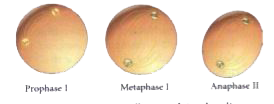Write answers for the following questions
Define between mitosis and meiosis.
Step-by-Step Solution:
1. Definition of Mitosis:
- Mitosis is a type of cell division that results in two daughter cells, each having the same number of chromosomes as the parent cell. It is essential for growth, repair, and asexual reproduction.
2. Definition of Meiosis:
- Meiosis is a specialized form of cell division that reduces the chromosome number by half, resulting in four genetically diverse daughter cells. It is crucial for sexual reproduction, producing gametes (sperm and eggs).
3. Number of Daughter Cells:
- In mitosis, one parent cell divides to produce two daughter cells.
- In meiosis, one parent cell divides to produce four daughter cells.
4. Stages of Division:
- Mitosis consists of four stages:
- Prophase
- Metaphase
- Anaphase
- Telophase
- Meiosis consists of eight stages, divided into two rounds:
- Meiosis I: Prophase I, Metaphase I, Anaphase I, Telophase I
- Meiosis II: Prophase II, Metaphase II, Anaphase II, Telophase II
5. Genetic Variation:
- Mitosis produces daughter cells that are genetically identical to the parent cell.
- Meiosis introduces genetic variation through processes such as crossing over and independent assortment.
6. Purpose of Division:
- The primary purpose of mitosis is for growth, repair, and asexual reproduction.
- The primary purpose of meiosis is for sexual reproduction, leading to the formation of gametes.
Summary Table:
| Feature | Mitosis | Meiosis |
|----------------------|----------------------------------|-----------------------------------|
| Number of Daughter Cells | 2 | 4 |
| Stages | 4 (Prophase, Metaphase, Anaphase, Telophase) | 8 (Prophase I, Metaphase I, Anaphase I, Telophase I, Prophase II, Metaphase II, Anaphase II, Telophase II) |
| Genetic Variation | No | Yes (due to crossing over) |
| Purpose | Growth, repair, asexual reproduction | Sexual reproduction |
- Mitosis is a type of cell division that results in two daughter cells, each having the same number of chromosomes as the parent cell. It is essential for growth, repair, and asexual reproduction.
- Meiosis is a specialized form of cell division that reduces the chromosome number by half, resulting in four genetically diverse daughter cells. It is crucial for sexual reproduction, producing gametes (sperm and eggs).
- In mitosis, one parent cell divides to produce two daughter cells.
- In meiosis, one parent cell divides to produce four daughter cells.
- Mitosis consists of four stages:
- Prophase
- Metaphase
- Anaphase
- Telophase
- Meiosis consists of eight stages, divided into two rounds:
- Meiosis I: Prophase I, Metaphase I, Anaphase I, Telophase I
- Meiosis II: Prophase II, Metaphase II, Anaphase II, Telophase II
- Mitosis produces daughter cells that are genetically identical to the parent cell.
- Meiosis introduces genetic variation through processes such as crossing over and independent assortment.
- The primary purpose of mitosis is for growth, repair, and asexual reproduction.
- The primary purpose of meiosis is for sexual reproduction, leading to the formation of gametes.
|----------------------|----------------------------------|-----------------------------------|
| Number of Daughter Cells | 2 | 4 |
| Stages | 4 (Prophase, Metaphase, Anaphase, Telophase) | 8 (Prophase I, Metaphase I, Anaphase I, Telophase I, Prophase II, Metaphase II, Anaphase II, Telophase II) |
| Genetic Variation | No | Yes (due to crossing over) |
| Purpose | Growth, repair, asexual reproduction | Sexual reproduction |
Topper's Solved these Questions
- CELL CYCLE AND CELL DIVISION BOOK - CENGAGE BIOLOGYCHAPTER - CELL CYCLE AND CELL DIVISION EXERCISE - CONSOLIDATED EXERCISE
62 Videos
- CELL CYCLE AND CELL DIVISION BOOK - CENGAGE BIOLOGYCHAPTER - CELL CYCLE AND CELL DIVISION EXERCISE - OLYMPIAD AND NTSE LEVEL EXERCISES
7 Videos
- CEL: THE BASIC UNIT OF LIFEBOOK - CENGAGE BIOLOGYCHAPTER - CEL: THE BASIC UNIT OF LIFEEXERCISE - CHALLENGING EXERCISE
4 Videos
- CELL: THE BASIC UNIT OF LIFEBOOK - CENGAGE BIOLOGYCHAPTER - CELL: THE BASIC UNIT OF LIFEEXERCISE - MANDATORY EXERCISE (Exercise Set III) (One Mark Questions)
51 Videos
Similar Questions
Distinguish between mitosis and meiosis
View SolutionDifferentiate between mitosis and meiosis.
View SolutionDifferentiate between mitosis and meiosis.
View SolutionDifferentiate between mitosis and meiosis.
View SolutionWrite answers for the following questions
What is synapsis?
View SolutionMention the differences between mitosis and meiosis.
View SolutionWrite answers for the following questions
What is crossing over?
View SolutionWrite answers for the following questions
What is a cell cycle?
View SolutionDifference Between Mitosis And Meiosis
View SolutionWrite answers for the following questions
Draw the chromosomes in the diagrams given below:

View Solution
